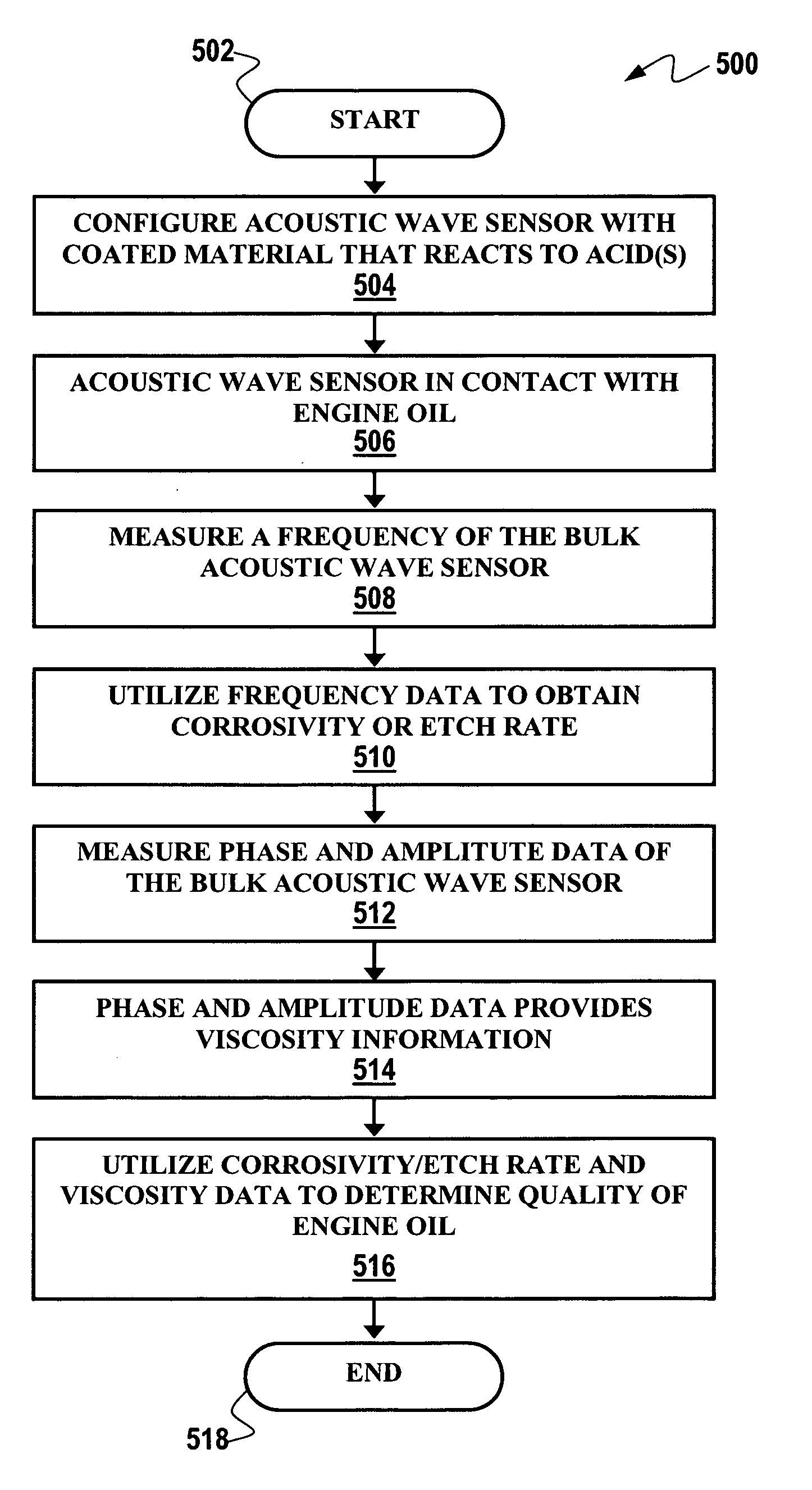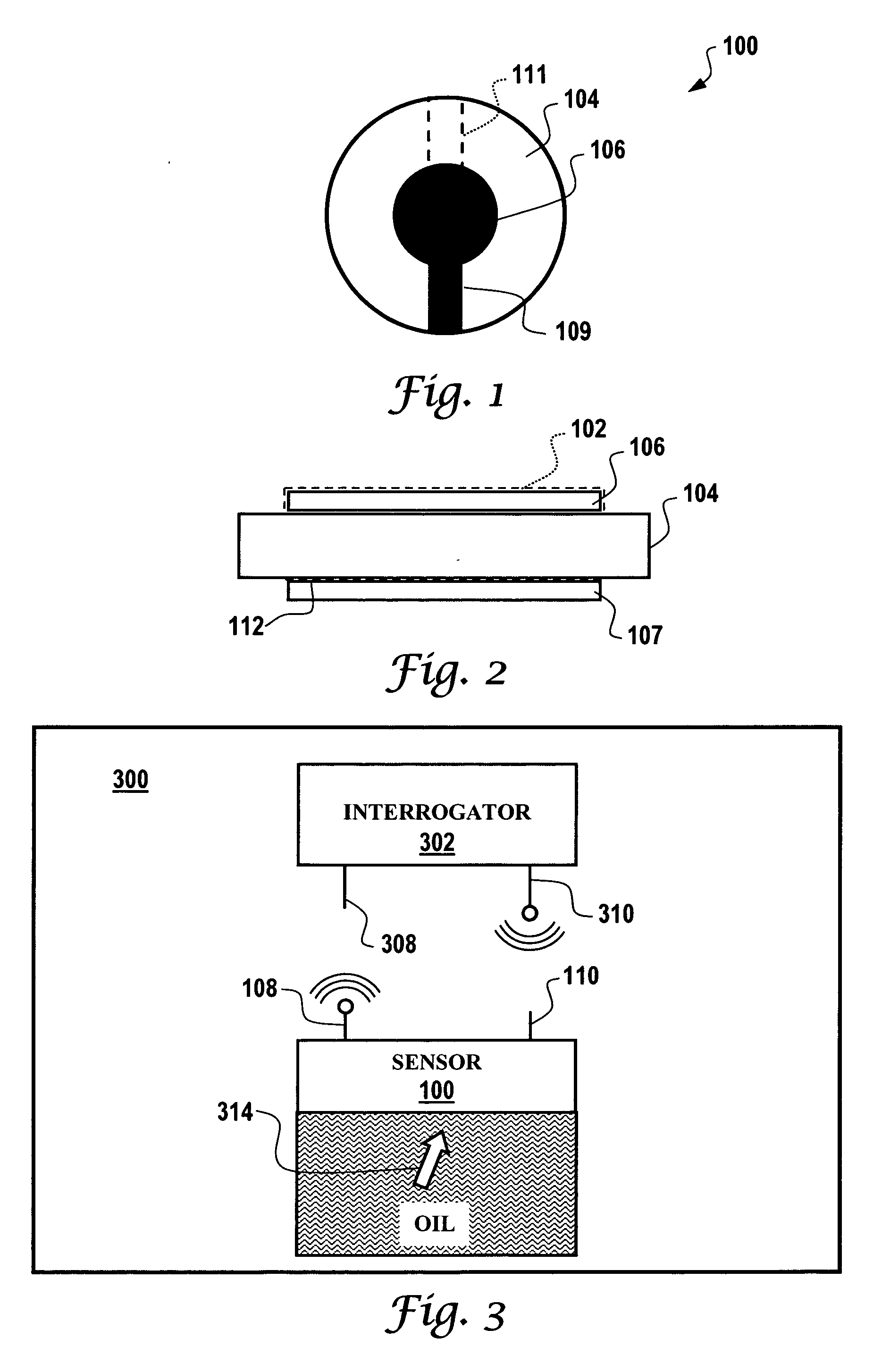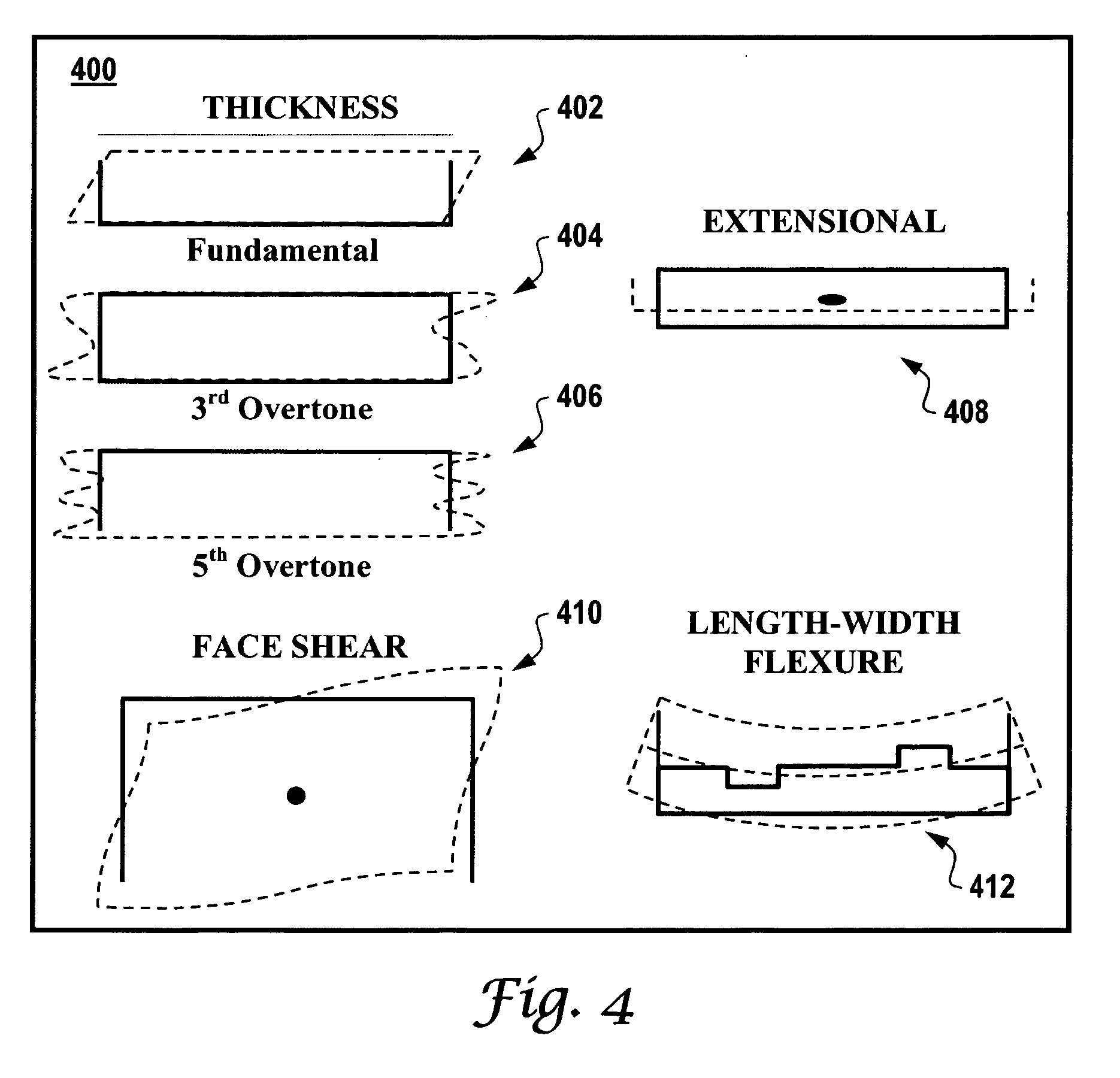Multiple-function acoustic wave oil quality sensor
a multi-functional, oil-quality technology, applied in the direction of instruments, using mechanical means, analysing fluids using sonic/ultrasonic/infrasonic waves, etc., can solve the problem of increasing the mass loading of the acoustic wave sensor, reducing the q value, and not being able to indicate how much acid is present, etc. problem, to achieve the effect of enhancing the viscosity of the engine oil
- Summary
- Abstract
- Description
- Claims
- Application Information
AI Technical Summary
Benefits of technology
Problems solved by technology
Method used
Image
Examples
Embodiment Construction
[0022] The particular values and configurations discussed in these non-limiting examples can be varied and are cited merely to illustrate at least one embodiment and are not intended to limit the scope thereof.
[0023]FIG. 1 illustrates a top view of a bulk wave device 100, which can be implemented in accordance with one embodiment. FIG. 2 illustrates a side view of the bulk wave device 100 depicted in FIG. 1 in accordance with one embodiment. Note that in FIGS. 1-2, identical or similar parts are generally indicated by identical reference numerals. Bulk wave device 100 can be implemented in the context of a multiple function oil quality sensor. Bulk wave device 100 generally comprises two electrodes, including a top electrode 106 and a bottom electrode 107, which are formed on a piezoelectric substrate 104. The bulk wave device 100 can be implemented in the context of a sensor chip. The electrodes 106, 107 can be round or rectangular, depending upon design considerations. Note that ...
PUM
 Login to View More
Login to View More Abstract
Description
Claims
Application Information
 Login to View More
Login to View More - R&D
- Intellectual Property
- Life Sciences
- Materials
- Tech Scout
- Unparalleled Data Quality
- Higher Quality Content
- 60% Fewer Hallucinations
Browse by: Latest US Patents, China's latest patents, Technical Efficacy Thesaurus, Application Domain, Technology Topic, Popular Technical Reports.
© 2025 PatSnap. All rights reserved.Legal|Privacy policy|Modern Slavery Act Transparency Statement|Sitemap|About US| Contact US: help@patsnap.com



